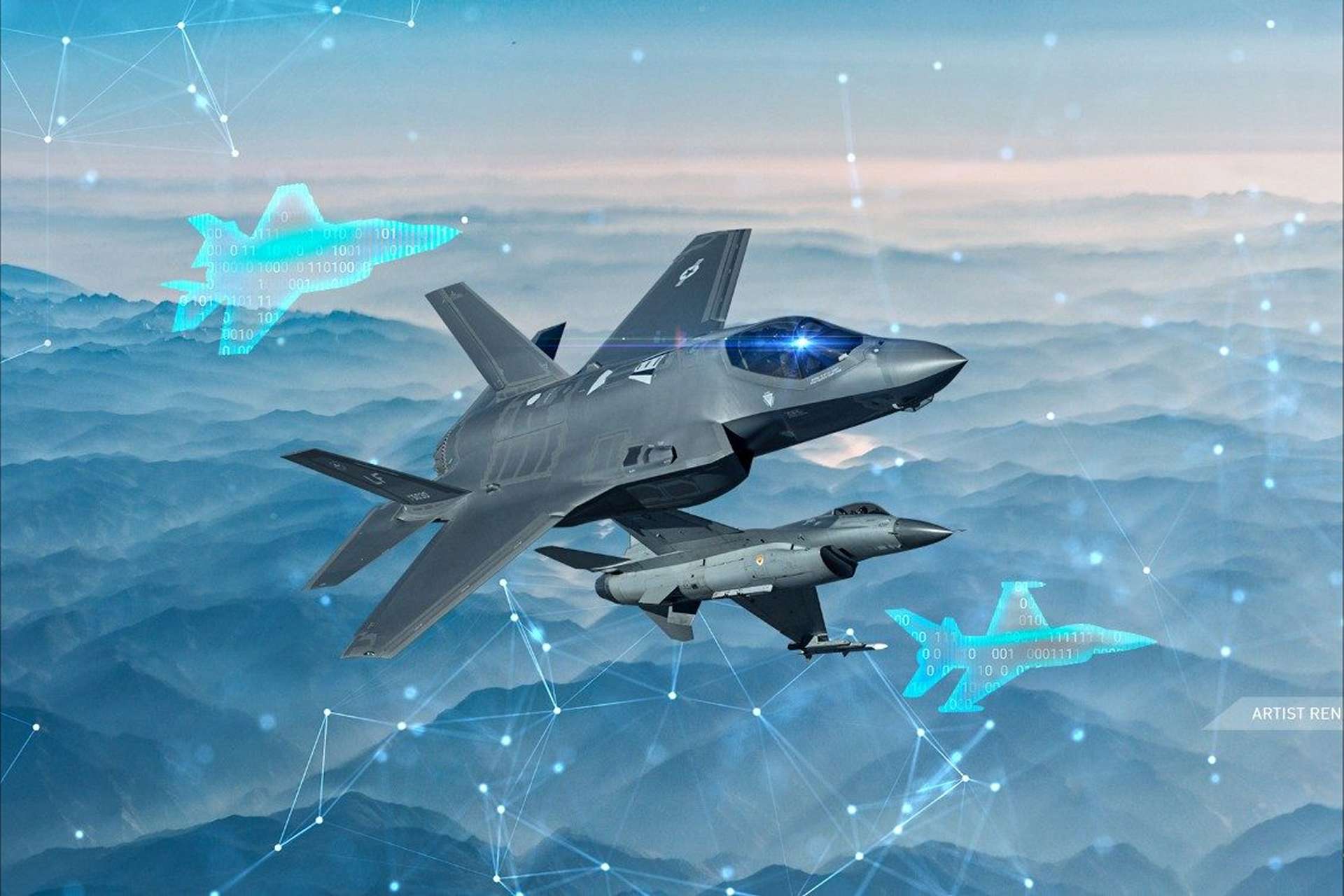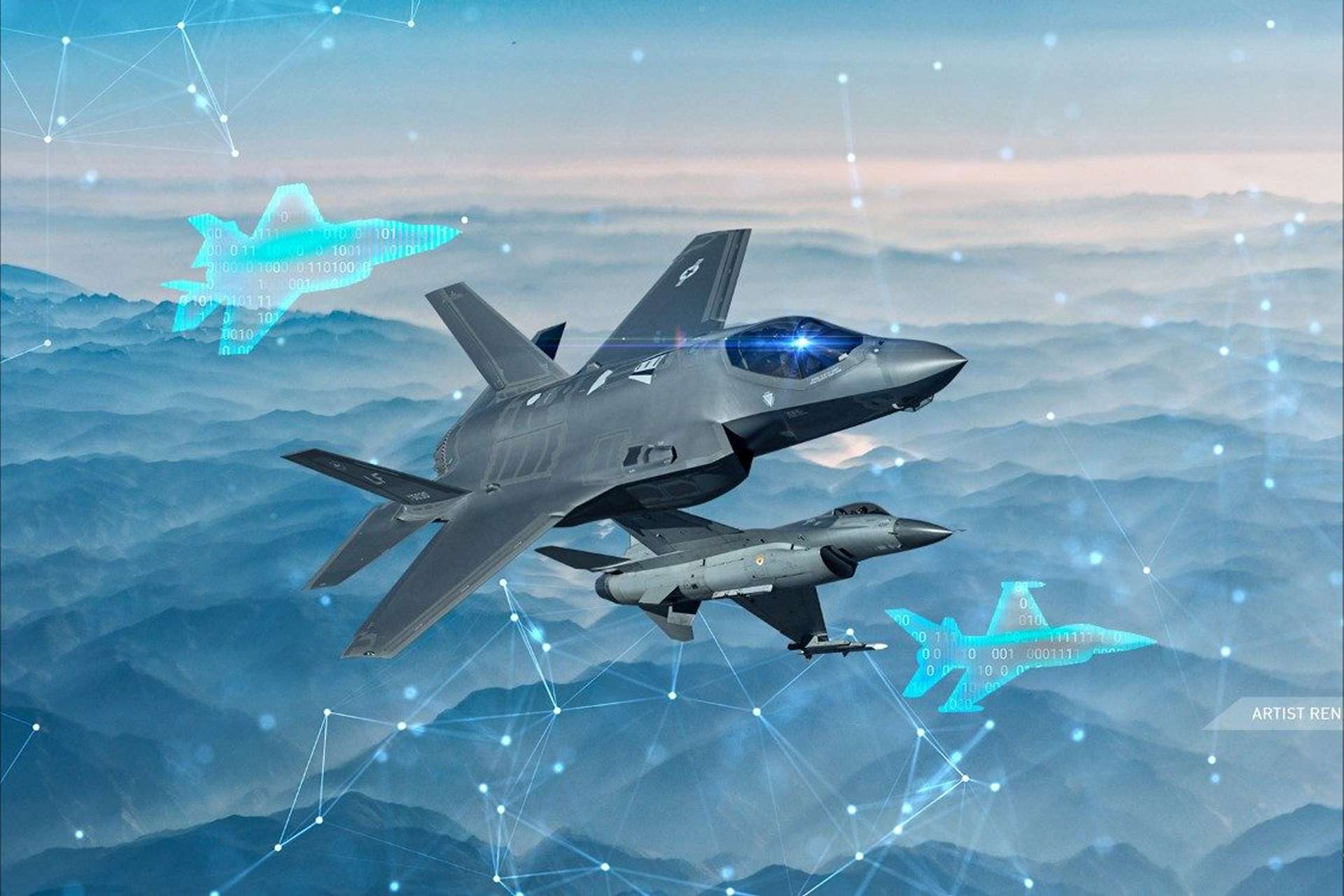Lockheed Martin Utilizes AI and Machine Learning to Transform Defense and Space Technology

{loadposition bannertop}
{loadposition sidebarpub}
Lockheed Martin continues to lead the way in using Artificial Intelligence (AI) and Machine Learning (ML) to support crucial missions in an increasingly complex geopolitical landscape. Recognizing the need for advanced technologies, the company prioritizes significant investments in AI and ML. This announcement was made by the American company on July 29, 2024, in a press release.Follow Army Recognition on Google News at this link
Lockheed Martin was awarded the AIR contract to develop AI tools for dynamic airborne missions, aiming to achieve dominant airborne tactical autonomy. (Picture source: Lockheed Martin)
One of their recent initiatives is the Artificial Intelligence Reinforcements (AIR) program by the Defense Advanced Research Projects Agency (DARPA). Lockheed Martin was awarded the AIR contract to develop AI tools for dynamic airborne missions, aiming to achieve dominant airborne tactical autonomy. This project focuses on providing advanced Modeling and Simulation (M&S) approaches and creating dominant AI agents for live, multi-ship, beyond visual range (BVR) missions.
As part of this project, Lockheed Martin is developing sophisticated M&S capabilities using AI-driven models to achieve rapid and precise results, enabling swift training of AI agents. Their ARISE™ capability standardizes M&S, employing AI to process large volumes of data, resulting in substantial savings for the Department of Defense and enhancing warfighter capabilities.
“When creating AI, vast amounts of data and high-fidelity simulations are essential,” said Jason Luck, a senior fellow in AI and autonomy at Lockheed Martin. “However, higher fidelity means greater processing demands and longer run times. The capabilities developed under DARPA AIR will advance ARISE, allowing extremely rapid testing and upgrades to meet urgent customer needs. We are also exploring other applications of these advanced capabilities within ARISE and across the company.”
Lockheed Martin’s use of AI extends to aircraft inspections, identifying potential anomalies to reduce maintenance costs and improve safety. This technology can be applied to various types of aircraft within the company.
Close collaboration with customers ensures that AI models are reliable and meet mission requirements. This collaboration is evident in Lockheed Martin’s work with the U.S. Navy’s Aegis Combat System, where AI/ML helps assess threats and make data-driven decisions. This technology has already been crucial in updating destroyers to counter Houthi attacks.
The company remains dedicated to advancing autonomous systems for the U.S. Air Force’s Collaborative Combat Aircraft (CCA) effort. The Skunk Works® team focuses on rapid development and large-scale production, integrating autonomous systems with crewed and uncrewed systems for optimal mission flexibility. This work emphasizes integrating fifth-generation aircraft and continues to develop pioneering open architectures, ground control systems like MDCX™, and mission systems.
One of the main challenges is data management. Currently, humans cannot quickly process all the sensor data received. Lockheed Martin addresses this challenge by demonstrating how AI can analyze diverse data streams, creating a prototype Earth and Space Observing Digital Twin of current global weather conditions for the National Oceanic and Atmospheric Administration (NOAA). Such technology enhances situational awareness for various clients.
Lockheed Martin also uses AI for spacecraft monitoring and control. In a company-funded demonstration for Combined Joint All-Domain Command & Control (CJADC2), AI autonomously monitors spacecraft telemetry for two small satellites of the Pony Express 2 mission. The onboard AI application, Telemetry Analytics for Universal Artificial Intelligence (T-TAURI), predicts potential failures faster than humans, allowing for proactive issue management.
These initiatives show how Lockheed Martin leverages AI and ML to support its clients, with many more innovations to come.
“At Lockheed Martin, our AI capabilities are designed to help customers complete their missions with greater speed, accuracy, and safety,” said Dr. Steve Walker, Chief Technology Officer at Lockheed Martin. “We have heavily invested in AI across all domains, offering an open AI platform on which others can build to ensure our military personnel have the necessary capabilities when and where they need them.”
With its expertise in AI and ML, Lockheed Martin is well-positioned to lead the way in defense and space technology, supporting 21st Century Security solutions. As AI and ML advance, Lockheed Martin will find new ways to support its customers and contribute to the security and prosperity of the United States and its allies.

{loadposition bannertop}
{loadposition sidebarpub}
Lockheed Martin continues to lead the way in using Artificial Intelligence (AI) and Machine Learning (ML) to support crucial missions in an increasingly complex geopolitical landscape. Recognizing the need for advanced technologies, the company prioritizes significant investments in AI and ML. This announcement was made by the American company on July 29, 2024, in a press release.
Follow Army Recognition on Google News at this link
Lockheed Martin was awarded the AIR contract to develop AI tools for dynamic airborne missions, aiming to achieve dominant airborne tactical autonomy. (Picture source: Lockheed Martin)
One of their recent initiatives is the Artificial Intelligence Reinforcements (AIR) program by the Defense Advanced Research Projects Agency (DARPA). Lockheed Martin was awarded the AIR contract to develop AI tools for dynamic airborne missions, aiming to achieve dominant airborne tactical autonomy. This project focuses on providing advanced Modeling and Simulation (M&S) approaches and creating dominant AI agents for live, multi-ship, beyond visual range (BVR) missions.
As part of this project, Lockheed Martin is developing sophisticated M&S capabilities using AI-driven models to achieve rapid and precise results, enabling swift training of AI agents. Their ARISE™ capability standardizes M&S, employing AI to process large volumes of data, resulting in substantial savings for the Department of Defense and enhancing warfighter capabilities.
“When creating AI, vast amounts of data and high-fidelity simulations are essential,” said Jason Luck, a senior fellow in AI and autonomy at Lockheed Martin. “However, higher fidelity means greater processing demands and longer run times. The capabilities developed under DARPA AIR will advance ARISE, allowing extremely rapid testing and upgrades to meet urgent customer needs. We are also exploring other applications of these advanced capabilities within ARISE and across the company.”
Lockheed Martin’s use of AI extends to aircraft inspections, identifying potential anomalies to reduce maintenance costs and improve safety. This technology can be applied to various types of aircraft within the company.
Close collaboration with customers ensures that AI models are reliable and meet mission requirements. This collaboration is evident in Lockheed Martin’s work with the U.S. Navy’s Aegis Combat System, where AI/ML helps assess threats and make data-driven decisions. This technology has already been crucial in updating destroyers to counter Houthi attacks.
The company remains dedicated to advancing autonomous systems for the U.S. Air Force’s Collaborative Combat Aircraft (CCA) effort. The Skunk Works® team focuses on rapid development and large-scale production, integrating autonomous systems with crewed and uncrewed systems for optimal mission flexibility. This work emphasizes integrating fifth-generation aircraft and continues to develop pioneering open architectures, ground control systems like MDCX™, and mission systems.
One of the main challenges is data management. Currently, humans cannot quickly process all the sensor data received. Lockheed Martin addresses this challenge by demonstrating how AI can analyze diverse data streams, creating a prototype Earth and Space Observing Digital Twin of current global weather conditions for the National Oceanic and Atmospheric Administration (NOAA). Such technology enhances situational awareness for various clients.
Lockheed Martin also uses AI for spacecraft monitoring and control. In a company-funded demonstration for Combined Joint All-Domain Command & Control (CJADC2), AI autonomously monitors spacecraft telemetry for two small satellites of the Pony Express 2 mission. The onboard AI application, Telemetry Analytics for Universal Artificial Intelligence (T-TAURI), predicts potential failures faster than humans, allowing for proactive issue management.
These initiatives show how Lockheed Martin leverages AI and ML to support its clients, with many more innovations to come.
“At Lockheed Martin, our AI capabilities are designed to help customers complete their missions with greater speed, accuracy, and safety,” said Dr. Steve Walker, Chief Technology Officer at Lockheed Martin. “We have heavily invested in AI across all domains, offering an open AI platform on which others can build to ensure our military personnel have the necessary capabilities when and where they need them.”
With its expertise in AI and ML, Lockheed Martin is well-positioned to lead the way in defense and space technology, supporting 21st Century Security solutions. As AI and ML advance, Lockheed Martin will find new ways to support its customers and contribute to the security and prosperity of the United States and its allies.





